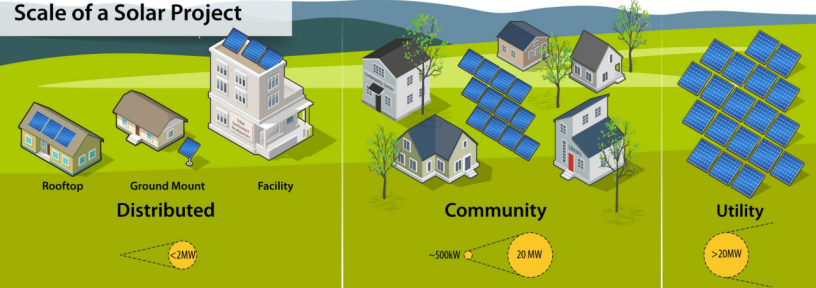Natural Resource Management and Environmental Resilience and Adaptation (Virtual Informational Session)
Brief Description: Rather than serving purely as a constraint on economic development, many tribes and Native communities have incorporated natural resource conservation and management strategies into their economic development plans as a source of potential revenue, a method of reducing the vulnerability of the community, and a demonstration of their view that their unspoiled lands and ecosystems have value that exceeds the benefits provided by potential development or exploitation.
This session will address how natural resource conservation and management and environmental adaptation and resilience strategies that guide community economic development activities enable tribes and Native communities to examine economic development through the lens of sustainability and cultural appropriateness.
This webinar discussed the NWI’s improved capacity to enhance mapping on tribal land and the multitude of benefits that mapping and digital dataset creation has for tribes. It also covered the EPA’s Tribal Wetland Program Development Grants and how NWI can help support Tribes in the grant application process.
TWG programs provide technical and up to $200,000 in financial assistance to federally recognized Tribes for the development and implementation of programs that benefit fish and wildlife and their habitats.
BPMGP is designed to strengthen and enhance the production and marketing of bison and bison products in the United States through business and resource development, and the advancement of innovative solutions or approaches to support the long-term growth of the Bison sector.
Funding will prioritize capacity building, meaningful engagement, and restoration project activities that enhance resilience of tribes, tribal entities, and underserved communities and have the greatest potential to lead to habitat restoration in coastal, estuarine, marine, and Great Lakes areas
Projects selected through this funding opportunity will have a transformative impact for coastal communities and tribes across the country. 15% of these grants are specifically available to federally recognized tribes, Alaska Native Corporations, and organizations that represent tribes through formal legal agreements.
The Suquamish Indian Tribe of the Port Madison Indian Reservation provides an example of advancing self-determination and economic development while maintaining traditional practices by creating the Suquamish Seafood Enterprises (SSE).
This toolkit is intended for a variety of rural entities, including local communities, Tribal governments, and individuals. The majority of information in this toolkit is most relevant to rural entities seeking to install charging stations for broader public or private use.
The Indian Land Tenure Foundation (ILRF) work to promote education on Indian land ownership and management, increase cultural awareness of Indian land tenure, create economic opportunity on Indian-owned lands, and reform the legal and administrative systems that prevent Indian people and Native nations from owning and controlling their lands.
This financing is great for producers who need to purchase land or need financing for the down payment portion. Anyone over the age of 18 years can apply for the land loan funds. Down payment assistance has up to a 15 year repayment period, and the full Land Mortgage Product has up to a 30 year repayment period.
As the impacts of weather changes worsen, Indigenous peoples and small farming communities are being targeted by the lure of Climate-Smart Agriculture (CSA). CSA casts a wide net, including land-use practices, limiting crop selection, and agricultural products that are presented as solutions to the food crisis and environmental changes.
Niweskok (From the Stars to Seeds) nonprofit collaboration of Wabanaki farmers, health professionals, and educators working to revitalize food systems for tribes in northeast Maine. The collection are responsible to their communities.
Quinault Indian Nation has had a deep connection to the ocean and ocean life for countless generations. Today, the nation and its members are using their natural resource and traditions for economic growth.
The people of the Yakama Nation has had a deep connection to the forest and their land for countless generations. The nation is utilizing their traditional ways to advance community economic development through conservation, selling timber, and educational advancement. The nation is creating jobs, advancing the nation’s economic capacity, and providing educational opportunities for their members.
The Inflation Reduction Act of 2022 (IRA) has multiple clean energy tax credits available to Tribal governments, Alaska Native Corporations, businesses; tax-exempt organizations; state, local, and governments; other entities; and individuals.
The Office of Indian Energy provides financial assistance on a competitive basis to develop and deploy clean energy infrastructure and technology, and this table lists current clean energy funding and related opportunities for Indian Tribes and Tribal entities from the U.S. Department of Energy and other federal agencies and entities.
The Standing Rock Sioux Tribe is developing a 235-megawatt, 60-turbine wind farm named Anpetu Wi (“morning light”) to provide clean energy, independence, and sustainability for their community. The development will be the single largest revenue source for Standing Rock, which they plan to reinvest into future projects and Standing Rock as a whole.
A renewable energy certificate, or REC, is a market-based instrument that represents the property rights to the environmental, social, and other non-power attributes of renewable electricity generation. RECs are issued when one megawatt-hour (MWh) of electricity is generated and delivered to the electricity grid from a renewable energy resource.






















NCGrowth’s Blueway Guide provides tools to help your community plan and build paddle trails, strategies to leverage blueways for economic development, and resources to generate community buy-in.